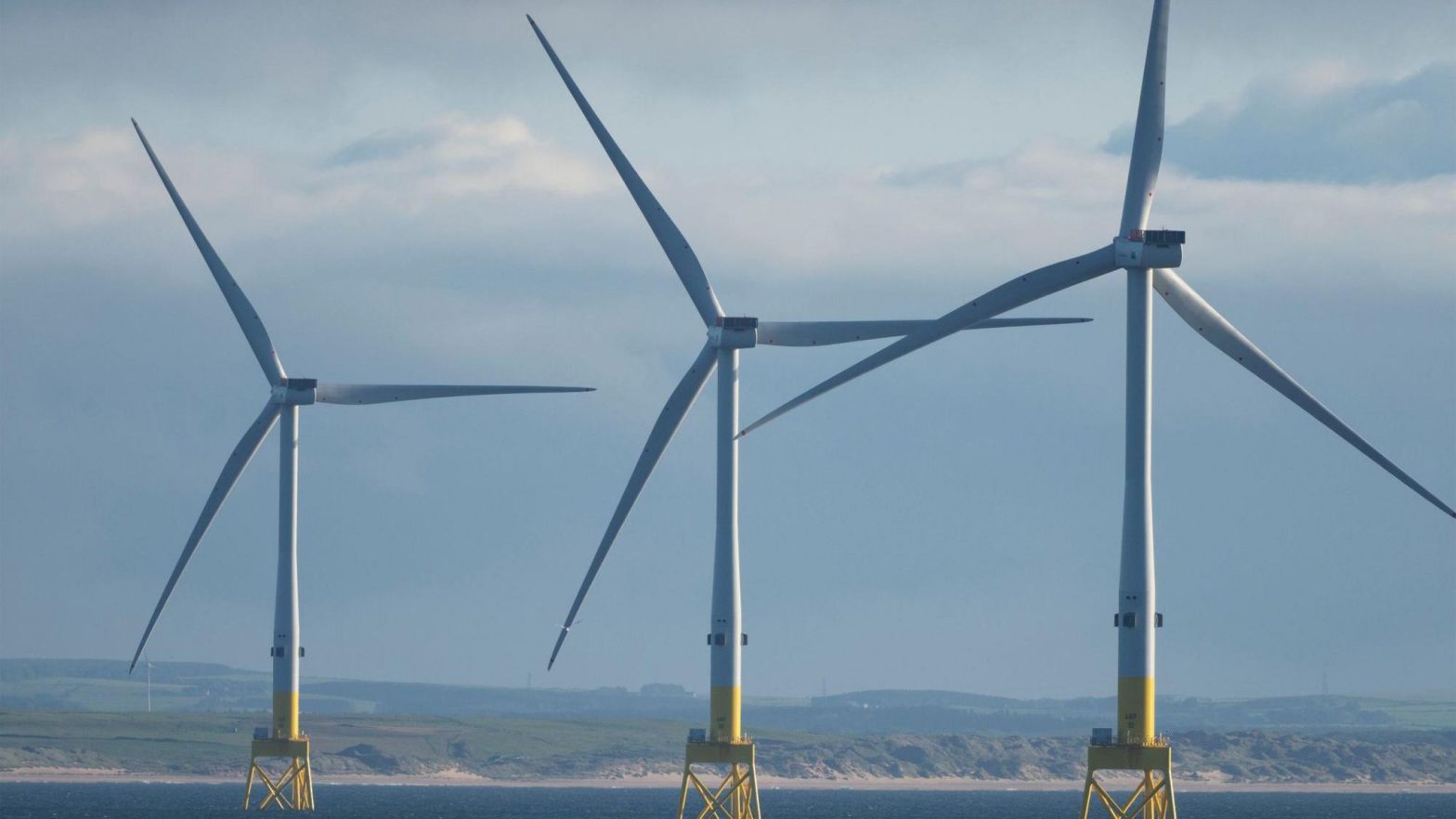Labour to use royal land to boost wind energy

The government is set to use British seabed owned by the Crown Estate to help build windfarms which it hopes will power 20 million homes.
It is the first major plan to be announced by Great British Energy, the government’s new company aimed at increasing renewable energy which will receive £8.3bn in state funding over the next five years.
Energy Secretary Ed Miliband claimed the initiative would “lead to lower bills” for households.
But the Conservatives said GB Energy is “nothing but a gimmick that will end up costing families”.
The deal means the Crown Estate – which manages a huge portfolio of property and land and helps fund the Royal Family – will lease the land on which windfarms can be developed and built.
The Crown Estate owns the majority of the seabed which stretches up to 12 nautical miles from the mainland.
Mr Miliband claimed investments in windfarms as well as other renewables such as solar energy will eventually lead to lower bills, but “it’s not going to happen overnight”.
He told BBC Breakfast that as renewable energy projects “start coming online we’ll start to see the effect on bills. We are going as fast as we can.”
The government believes it can cut the time it takes to get windfarms producing power by half. It typically takes more than 10 years to build offshore windfarms.
Labour’s hope is that GB Energy, a key manifesto pledge, will reduce UK “over-reliance” on fossil fuel markets, with prices rising rapidly after Russia’s invasion of Ukraine.
This is turn pushed up the pace of general price rises, contributing to the cost-of-living crisis.
Prime Minister Keir Starmer said that the plans were “turbocharging our country toward energy security”, and promised that it would lower energy bills.
However, the Conservatives have said GB Energy “will end up costing families, not cutting bills”.
“Labour have already been forced to admit that their flagship energy company won’t generate any energy, and now we know it’s a financial black hole – funnelling taxpayer’s money into reducing risk for multi-million-pound energy companies,” said shadow energy secretary Claire Coutinho.
The government is providing GB Energy with £8.3bn of funding but hopes to attract £60bn of private investment.
The aim is to get windfarm projects that could generate between 20GW and 30GW of offshore power to lease stage by 2030.
The partnership with the Crown Estate will, the government said lead to between 20GW and 30GW of new offshore wind reaching seabed lease stage by 2030
The Crown Estate already had this as a target, but on Thursday the government confirmed it will help.
The agreement is only for projects around England and Wales, but Labour is also in discussions with the Scottish government and Crown Estate Scotland on support for local projects.
Last year, the Northern Ireland Executive and the Crown Estate agreed a statement of intent towards establishing leasing for offshore windfarms.
Northern Ireland currently has no offshore windfarms after a number of projects were abandoned at the planning stage.
GB Energy will be “at the heart of the government’s mission to make Britain a clean energy superpower”, the government said.
It added that the company will take stakes in energy projects to help speed them up.
This includes giving a boost to technologies including carbon capture and storage, which has yet to be deployed at scale, along with hydrogen, wave and tidal energy.
Eventually, GB Energy may take a controlling interest in some renewables generation projects.
-
What would ‘GB Energy’ mean for Scotland’s green economy?
-
23 June
-
-
Energy HQ will bring huge number of Scottish jobs – Starmer
-
31 May
-
With GB Energy’s £8.3bn of funding, Labour hopes to attract £60bn of investment.
The government wants GB Energy to speed up renewable energy projects by helping them develop, and invest in them alongside private investors.
It wants it to work with local energy projects and the nuclear industry.
Alongside a new law to create GB Energy, the government will also loosen regulation on the Crown Estate so it can invest and borrow more.
The government has taken a number of decisions on renewables generation since coming to power in the recent election.
It has approved three big onshore solar farm projects which have faced local opposition.
Related Topics
- Wind power
- Energy industry
- North Sea oil and gas
- Climate
- Environment
- Wind turbines
- Wind farms
- Oil & Gas industry
- Renewable energy
Published at Thu, 25 Jul 2024 07:26:40 +0000
